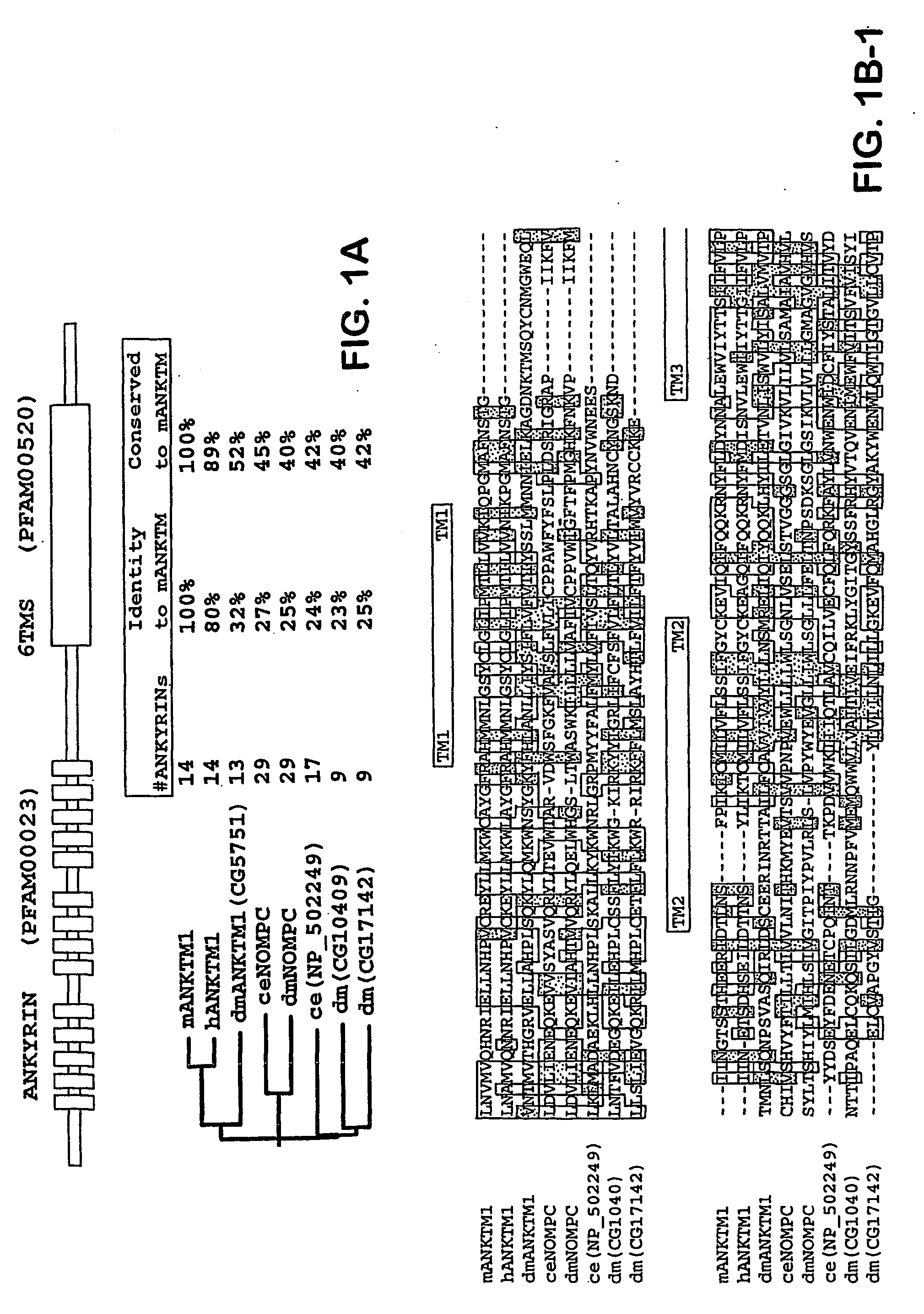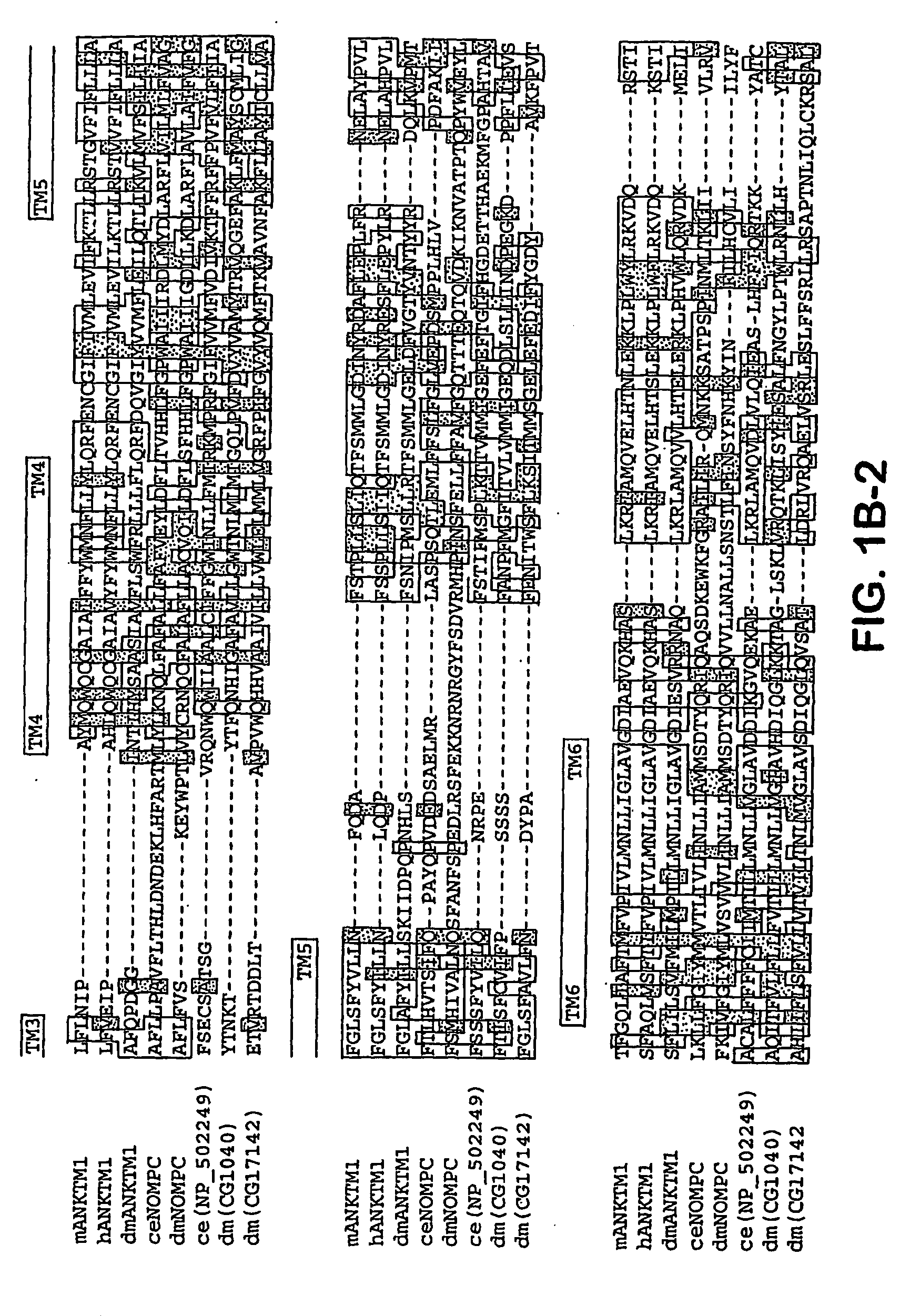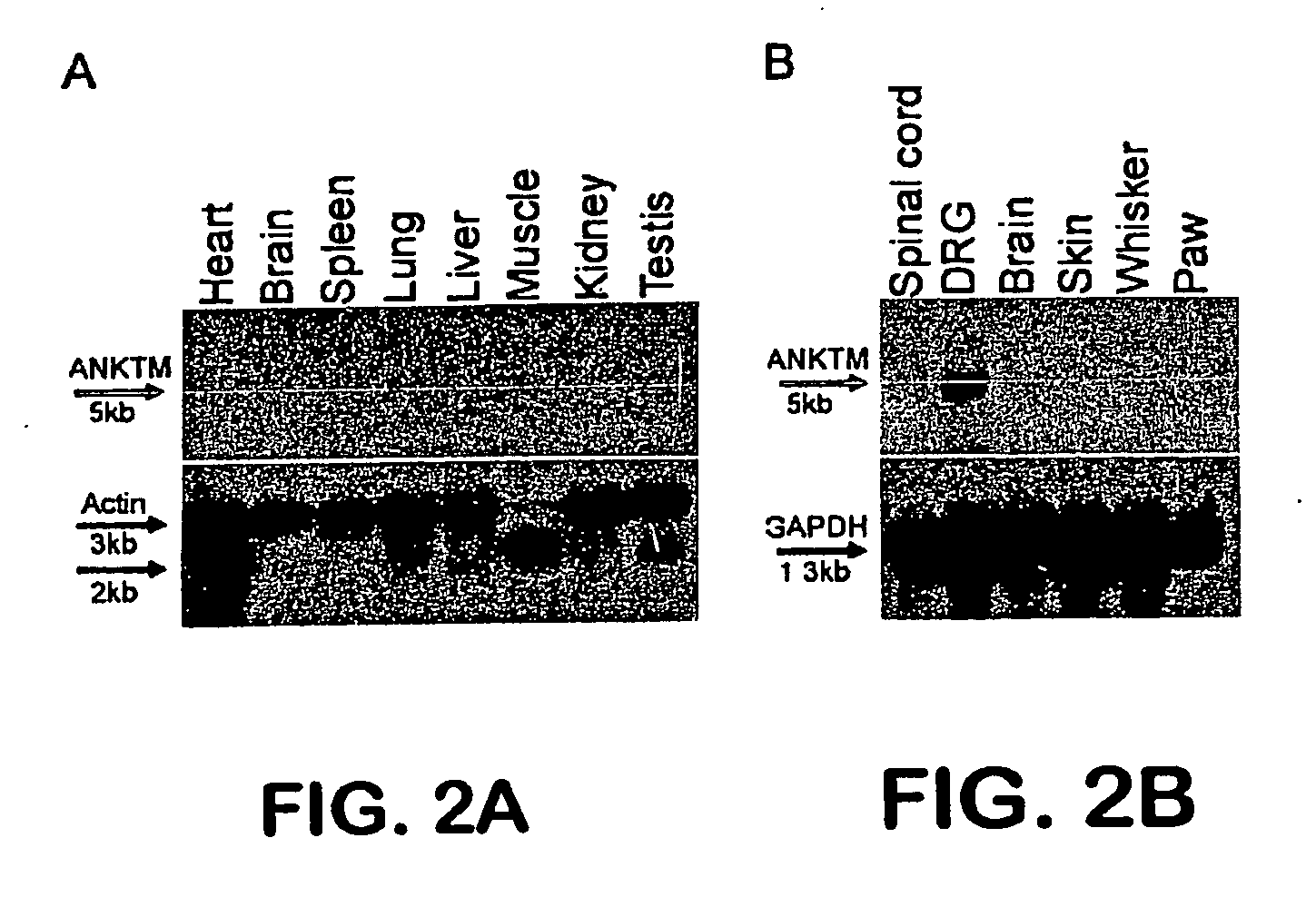Anktm1, a cold-activated trp-like channel expressed in nociceptive neurons
a nociceptive neuron, cold-activated technology, applied in the direction of peptides, drug compositions, tissue culture, etc., can solve the problems of limiting the utility of opiates for controlling post-injury pain, central neurons in the spinal cord to develop an exaggerated response to subsequent, additional discomfort, etc., to reduce nociceptive pain and reduce nociceptive pain.
- Summary
- Abstract
- Description
- Claims
- Application Information
AI Technical Summary
Benefits of technology
Problems solved by technology
Method used
Image
Examples
example 1
Molecular Cloning of ANKTM1
[0187] Bioinformatic searches were done as previously described (Peier et al., 2002a, supra; Peier et al., 2002b, supra). Sequence analysis was performed using the Biology Workbench at the San Diego Supercomputing Center. A 902-base pair fragment of the mouse homologue of ANKTM1 was amplified from newborn mouse DRG cDNA using the following primers:
(SEQ ID NO:9)mANK-like F2 (5′-AGTGGGGAGACTACCCTGTG)and(SEQ ID NO:10)mANK-like R2 (5′-TTTATCATGCCCATTCTTTGC).
[0188] From this initial sequence and subsequent hits to DNA databases, the following primers were designed to PCR-amplify full-length ANKTM1 from adult mouse trigeminal ganglia cDNA:
mANK-like start(SEQ ID NO:11)(5′TTTGGATCCGCCACCATGAAGCGCGGCTTGAGGAGG)andmANK-like stop(SEQ ID NO 12)(5′TTTGCGGCCGCCTAAAAGTCCGGGTGGCTAATAGAAC).
EXAMPLE 3
[0189] Overall tissue distribution of ANKTM1 was analyzed by Northern blot analysis using a probe corresponding to nucleotides 590-1492 of mouse ANKTM...
example 3
Double In-Situ Hybridization Studies
[0192] The expression of ANKTM1 relative to known thermo-activated TRP channels was also studied. TRPV1 (VR1) is a well-characterized receptor for noxious heat, pH, and capsaicin. For double in-situ hybridizations, sections were hybridized with in vitro transcribed digoxigenin- or fluorescein-labeled cRNA probes (Roche, Basel, Switzerland) corresponding to nucleotides 590-1492 of mANKTM1, and nucleotides 1410-1980 of mTRPM8 (NM—029310) (SEQ ID NO:14). We used two cRNA probes corresponding to bases 1516-2065 or 1516-2482 of TRPV1 sequence (AF029310). Both probes showed consistent patterns of hybridization. Peroxidase-conjugated anti-digoxigenin-POD (1:500) and alkaline phosphatase-conjugated anti-fluorescein (1:2000) antibodies (Roche) were used to detect hybridized cRNA probes and visualized using tyramide signal amplification (TSA; NEN) and fast-red detection (Roche) systems, respectively. The immunostaining experiments followed hybridization o...
example 4
[0195] Nevertheless, since ANKTM1 bears similarities to TRP-like channels expressed in sensory neurons, tests were conducted to determine activation of ANKTM1 by various sensory stimuli. To this end, a series of tests were conducted using full-length murine ANKTM1 stably transfected in Chinese Hamster Ovary (CHO) cells containing FRT sites (CHO-K1 / FRT) under control of a tetracycline (Tet)-inducible promoter via Flp recombinase mediated recombination.
[0196] CHO-K1 / FRT cells were stably transfected with full-length murine ANKTM1 in the pcDNA5 / FRT vector using Lipofectamine (Invitrogen) according to the manufacturer's protocol. Transfected cells were selected in growth medium containing Hygromycin (200 μg / mL). Northern blot analysis identified stable clones expressing ANKTM1 mRNA. The generation of stable murine TRPM8-expressing CHO-K1 / FRT cells has been previously described (Peier et al, 2002). ANKTM1-expressing stable CHO-K1 / FRT lines appeared unhealthy ...
PUM
| Property | Measurement | Unit |
|---|---|---|
| Temperature | aaaaa | aaaaa |
| Dissociation constant | aaaaa | aaaaa |
Abstract
Description
Claims
Application Information
 Login to View More
Login to View More - R&D
- Intellectual Property
- Life Sciences
- Materials
- Tech Scout
- Unparalleled Data Quality
- Higher Quality Content
- 60% Fewer Hallucinations
Browse by: Latest US Patents, China's latest patents, Technical Efficacy Thesaurus, Application Domain, Technology Topic, Popular Technical Reports.
© 2025 PatSnap. All rights reserved.Legal|Privacy policy|Modern Slavery Act Transparency Statement|Sitemap|About US| Contact US: help@patsnap.com



